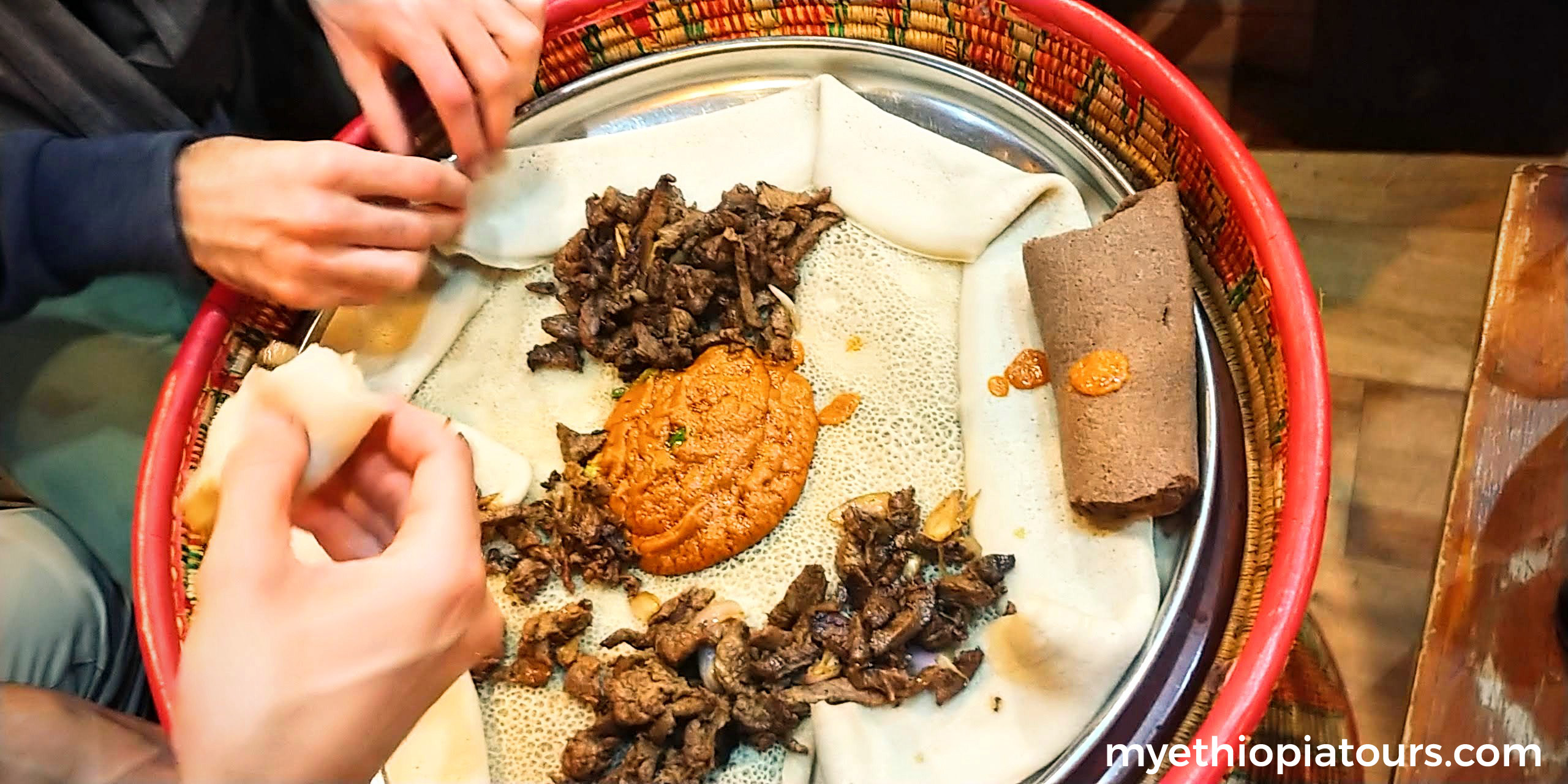
Ethiopian Food & Drink
With more than 85 ethnic groups, Ethiopia has a diverse cousin. Most ethnic groups have their own unique dishes or share them with each other. Sometimes it is not easy to know which foods and drinks belong to which tribes. For example, the so-called Ethiopian national dish Doro is usually a festive dish from the northern part of the country. Now it is more common in the south and center of the country. Similarly, the kitfo is associated with the Gurage tribes. Now Kitfo is one of the most famous foods in Ethiopia.
Religion played an important role in the evolution of Ethiopian dishes in their uniqueness. During the Lenten season, Orthodox Ethiopians follow strict religious rules to abstain from foods containing meat, poultry, milk, cheese, eggs, fish, etc., only vegan foods such as vegetables, grains, beans, fruits, and oilseeds are allowed.
Characters of Ethiopian food
Without fancy cutlery and sophisticated tableware, Ethiopian food looks unique and beautiful. There are dozens of spices in Ethiopian food. Perhaps being spicy is the defining feature of Ethiopian cuisine. But there is also a non-spicy version called Alcha (ALCHA). Most Ethiopian cuisines served with a flatbread called Injera. Eating Injera by hand is part of an authentic experience.
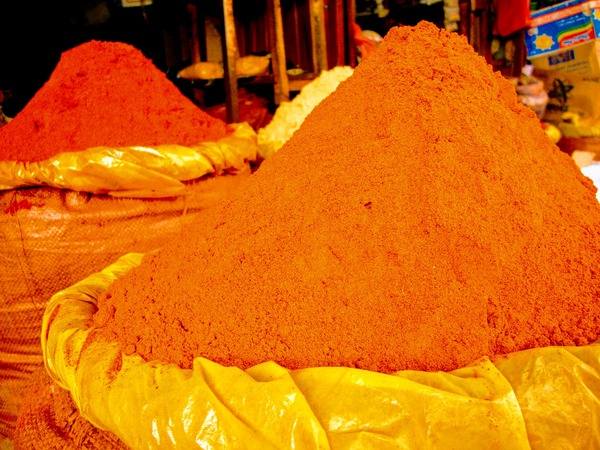
Injera (እንጀራ)
Injera or enjera is the most common staple food in Ethiopia. It is a circular dish like bread with a slightly spongy texture. Traditionally it is made from an ancient grain called Teff and other cereal flours such as barley, wheat, sorghum, etc. An authentic Injera is made from Teff, a cereal that grows only in Ethiopia. While Injera is originally specific to Ethiopia, it is also widespread in other East African nations such as Eritrea. It has also found its way to cities in America, Canada, Europe, Australia and Israel, where a large number of communities from the Ethiopian and Eritrean diaspora reside.
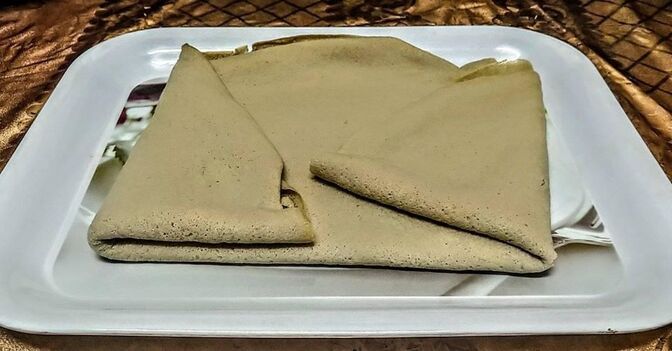
Injera is usually served on flat plates with a variety of stews called Wet. Wet stew (WET) is prepared from a combination of ingredients cooked in liquid (stew). it can be made of lentils, peas, chickpeas, meat, chicken and vegetables cooked in spices, onion, oil and butter. Ethiopian dishes are named after stew (WET).
It takes a long process to make Injera. We start with the choice of a good clean Teff cereal that goes to the mill, the flour will be mixed with water and left to ferment for three days. The sour taste of injera comes from this fermentation process. Then it will be cooked on a circular hot clay plate.
Injera is a very healthy food as teff is gluten-free and is rich in calcium, iron, important minerals, carbohydrates and complex proteins.
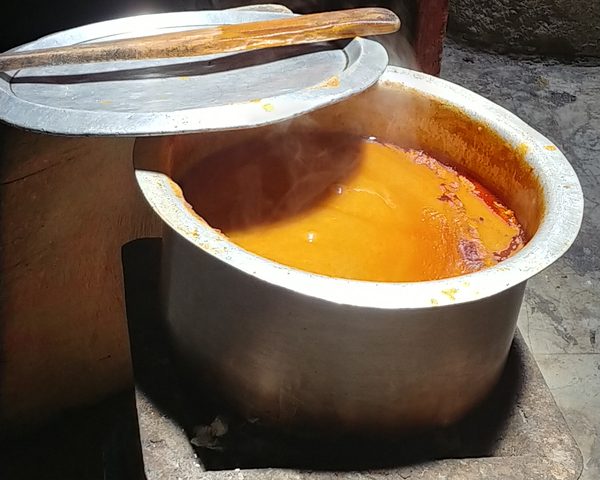
Ethiopian popular Dishes
Shiro
Shiro is a slow cooking stew whose ingredient is onion, garlic, oil , berbere (Ethiopian spice), butter and shiro powder. Shiro powder is the main ingredient which is a homemade spicy powder of chickpeas, broad beans, round peas or other beans. It is the most consumed and the most affordable dish.
Shiro is wonderful and served at the top of Injera. Sometimes it comes on a bowl. There are several versions of Shiro. Shiro feses is a thin liquid version. Tegabino is a type of Shiro made more dense and served with a pot of hot clay. Bozena Shiro is a Shiro made with small meat.
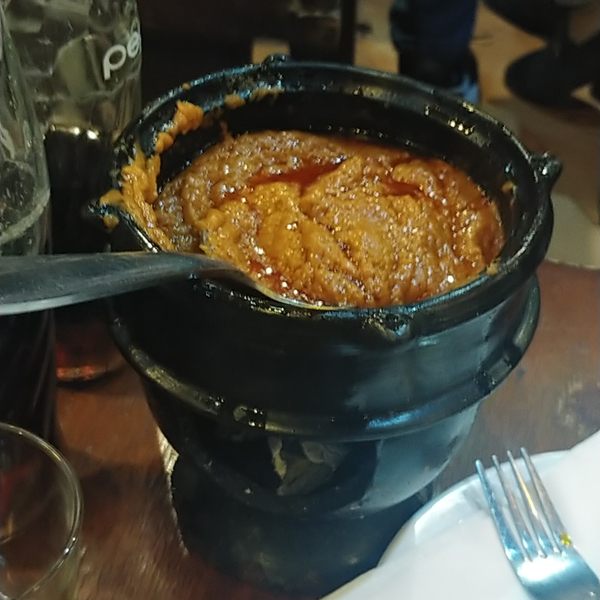
Kitfo
Kitfo: It is perhaps the most popular food among local Ethiopians. It is consumed on special occasions such as parties and weddings. Kitfo is made with freshly ground raw red meat with no fat, then mixed with spicy butter, chili, cardamom, and salt in a slightly warm clay bowl. The most traditional and authentic version of Kitffo is served raw. It has lightly cooked and cooked versions that you can eat to your liking and preferences. On the Kitfo side, chopped green cabbage, cottage cheese and a piece of bread called Kocho are served.
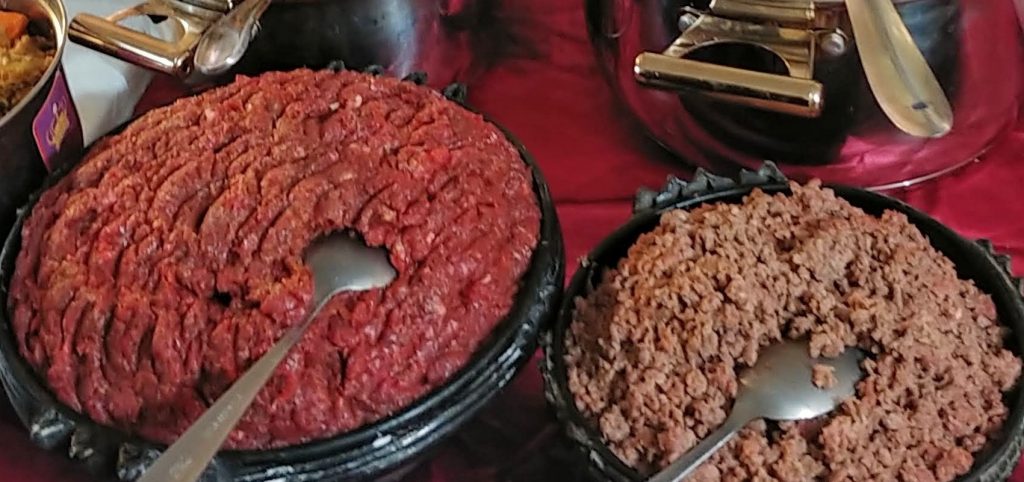
Tire-siga
Tire-siga is raw beef. Yes, Ethiopians are obsessed with raw meat, it’s simple raw meat served with a hot spicy paste called Awaze. The best feast and traditional celebration is accompanied by the consumption of raw meat. It is one of the most popular dishes. A butcher cuts the best portion and serves it with a knife. Use the knife to cut it into cubes and drop it in a spicy paste and eat.
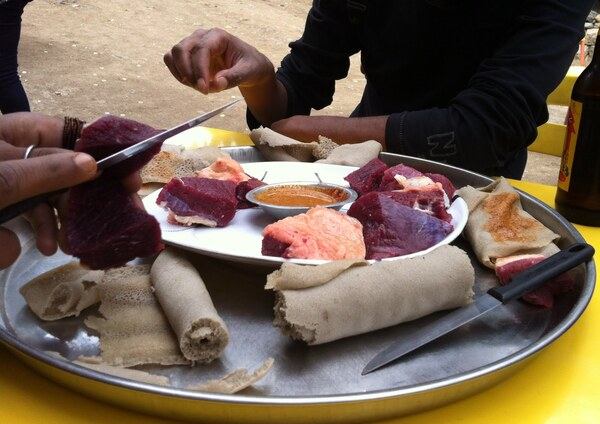
Doro wat
Doro wat is considered Ethiopia’s national dish. It’s a spicy, slow-cooked onion-based chicken stew. Often served on Injera with cottage cheese and hard-boiled eggs. Cooking Doro is considered the master of all kitchens because it takes a lot of time and the best mix of spices.
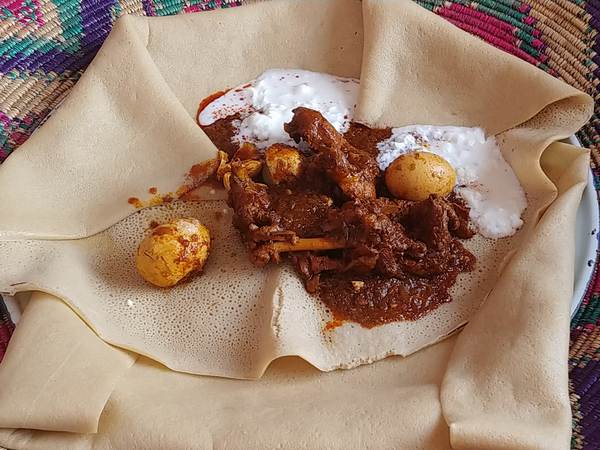
Beyaynetu
Beyainatu: Beyaynetu which can be translated as It is a mixed platter of different stews and vegetables topping on Injera Variety is a sampler dish of every small bite of different stew you can add on top of a plate of Injera. there are different toppings, however, most common are collard green, cabbage, tomato, potatoes, Shiro, lentil stews, and more, creating a riot of colors and tastes. Ethiopia is one of the most exciting countries for many vegetarians and many foodies. Beyayinetu is completely vegan food.

Tibs
Tibs: is a Cube slide meat steered on a hot pan with the onion, garlic, spiced with Rosemary and green paper. The meat can be beef, goat, or lamb. Tibs is one of the most popular and quickest Ethiopian dishes to make. Tibs is served in a variety of manners and version, Our favorite is Shekla tibs, which is pan-roasted Crispy Meat served on top of Clay on hot flaming coal. Served with a small Awaze Sauce, Chili, and Mustard.
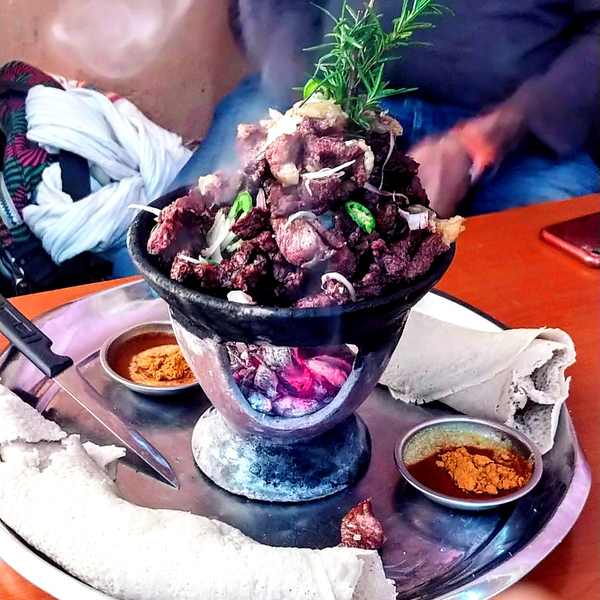
Tej or Honey wine
Tej Ethiopian honey wine is an alcoholic drink brewed by fermenting honey, water, yeast, and Gesho a kind of hop only found in Ethiopia. It tastes sweet at first but it will get a bitter taste from the hops or Gesho. Many families make it at home but It is mostly found in a special Tej bar and traditional food restaurants. It is nicknamed the kings’ drink as it is always. It is served in long-necked little flasks called Birille.

Areke
Arake is a traditional home-distilled alcoholic drink from grains, malt, and Gesho leafe or hops. Areke can be commonly served in social settings and gatherings; the drink is famous for its high alcohol content.
Tella
Tella or Talla or Ethiopian traditional Beer is the most commonly consumed Homemade traditional alcoholic beverage It is brewed or fermented without yeast from hops, malt, and various grains, typically Barley, Wheat, Teff, sorghum or maize.
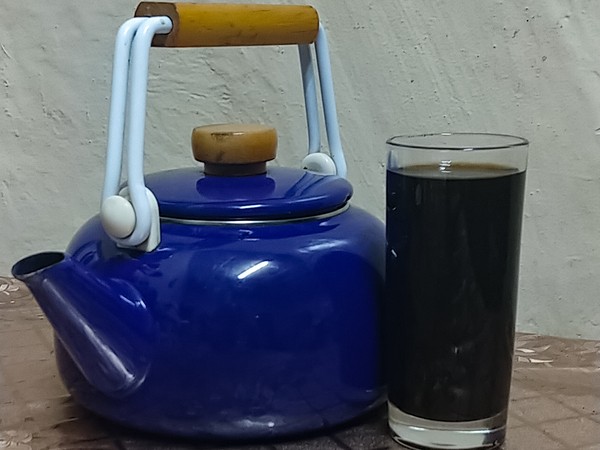
Breakfast
Bula
Bula is a thick porage similar to Genfo presented in a large mound with a hole in the center, filled with a mixture of spiced butter and berbere or chili. The flour used to make Bulla is from an indigenous plant called Enset or false Banana.
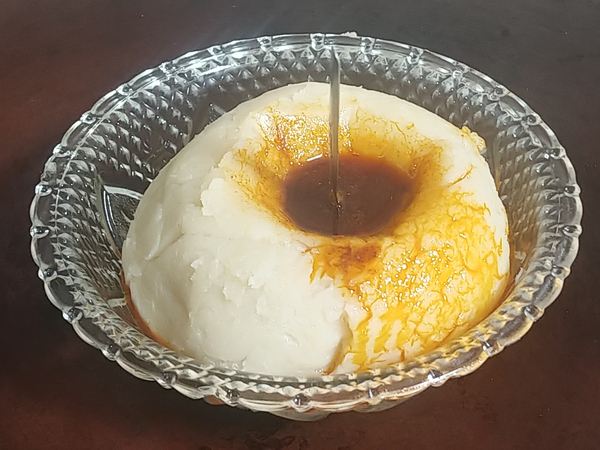
Beso
Beso has eaten like bread in the morning made from lightly roasted barley flour mixed with a bit of Warmed water and butter or oil till it can be stuck to each other.

Beso
Beso Drink is a shake of lightly roasted barley flour with honey or sugar. It is very famous among runners.
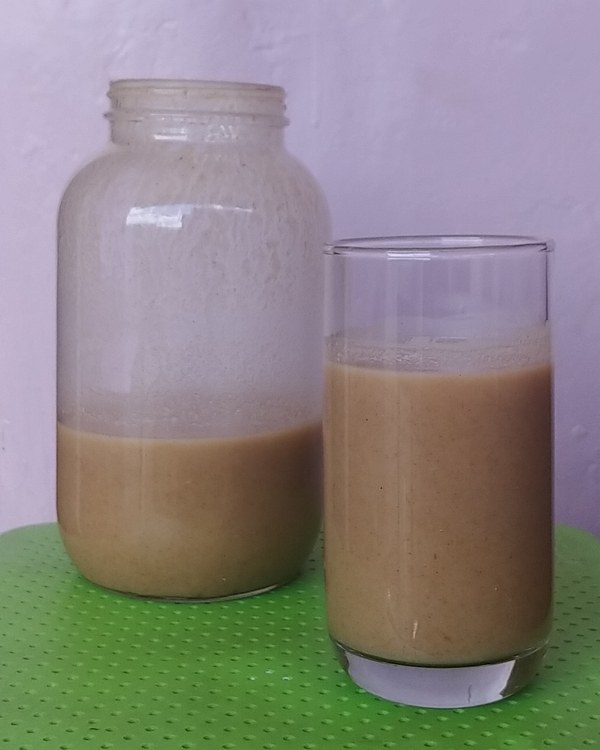
Milk and Yogurt
Cow Milk, Cow yogurt mixed with Mitmita /spiced chili powder. In the highlands of Ethiopia are common. Goat Milk and Camel milk used in the low land region in the east.
Enkulal fir-fir
Enkulal fir-fir is a scrambled egg with onion, oil and green paper on top can be presented with bread or Injera. Ethiopia’s a scrambled egg scrambled eggs made with a
Firfir
Firfir it is broken Injera mixed into a spicy sauce. The sauce can be cooked from Tomato, Berbere spice/ spiced hot paper, oil and butter. The source also could have dry or fresh meat.
